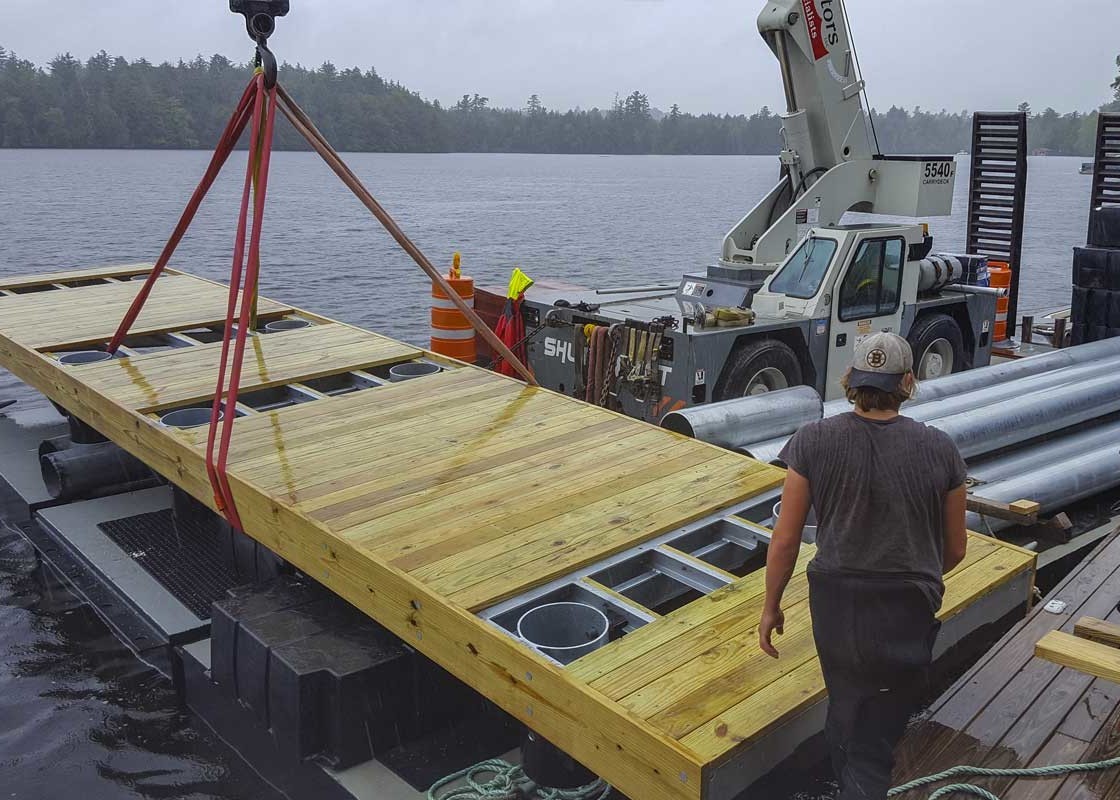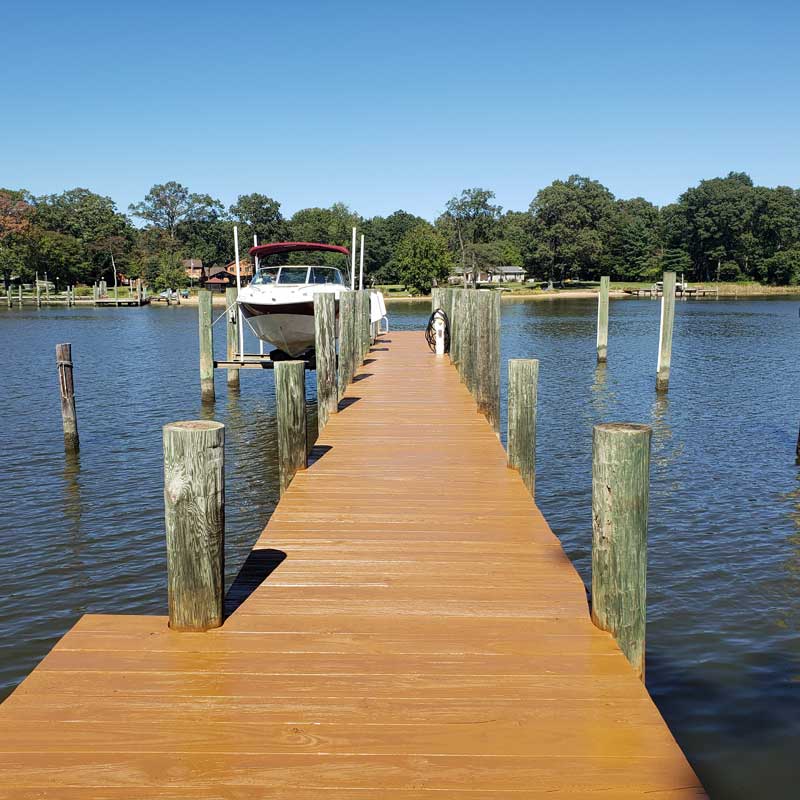How to Choose the Right Service for Your Dock Repairs
Wiki Article
Effective Dock Repair Techniques: Making Certain Architectural Integrity
Guaranteeing the structural stability of anchors via reliable fixing strategies is paramount for the long life and safety and security of aquatic centers. Subsequently, selecting the appropriate repair work products, such as corrosion-resistant alloys and composite products, is essential for longevity.Examining Dock Damage
Examining dock damage is an essential very first action in guaranteeing the structural integrity and safety and security of any kind of docking facility. This initial analysis involves a detailed examination to determine both covert and noticeable damages. Key elements to analyze include the dock's structure, pilings, decking, and equipment. Each component needs to be scrutinized for signs of wear, rot, deterioration, or other types of destruction that can compromise the architectural stability.Structural designers or qualified inspectors generally execute these assessments making use of specialized strategies and devices. Undersea inspections might employ sonar tools or remotely operated cars (ROVs) to discover immersed damages. Above water, visual inspections are complemented by utilizing moisture meters and other diagnostic tools to reveal underlying issues not promptly visible to the naked eye.

Finding Fixing Products
Selecting the proper repair materials is a pivotal action in the dock repair process, one that directly influences the long life and performance of the fixed framework. Material choice have to be driven by aspects such as environmental problems, load-bearing needs, and compatibility with existing dock parts. Timber is a standard selection for docks due to its natural strength and aesthetic charm. Nonetheless, picking the right kind of wood, such as pressure-treated lumber or normally rot-resistant types like cedar or teak, is essential to stand up to marine atmospheres.Along with timber, composite products are progressively preferred because of their resilience and reduced upkeep demands. Compounds, typically made from a blend of plastic and timber fibers, offer superb resistance to rot, insects, and UV damages. For metal anchors, selecting corrosion-resistant alloys such as galvanized steel or marine-grade light weight aluminum is important to prevent corrosion and ensure architectural stability in saline water problems.
Epoxy resins and marine-grade sealants are crucial for fixing splits and sealing joints, giving a water-proof barrier and enhancing the dock's total stamina. By thoroughly choosing premium materials, dock repair work can achieve resilient outcomes, therefore guarding versus future degradation and making sure secure, dependable use.
Architectural Reinforcement Techniques
Reliable architectural reinforcement techniques are important in making certain the security and durability of dock repair services. One basic technique involves the use of steel or composite support bars (rebar) within concrete structures. Rebar supplies extra tensile stamina, protecting against fractures and dispersing lots extra equally. This method is particularly reliable for anchors subjected to hefty lots or harsh environmental problems.One more important strategy is the application of fiber-reinforced polymers (FRP) These materials use high strength-to-weight proportions and outstanding resistance to rust, making them suitable for strengthening concrete or wood docks. FRP can be used in strips or sheets and bonded with epoxy resins to improve architectural integrity.
Bracing and anchoring systems likewise play a vital function in structural support. Cross-bracing, using metal or wood beams, can counteract side forces, reducing guiding and movement. Securing systems, such as helical piers or driven piles, offer a stable foundation by moving tons to deeper, look what i found extra secure soil layers.
Finally, the combination of load-distribution plates can help distribute weight more equally across the dock's surface area, alleviating localized anxiety points. These techniques jointly ensure that anchors continue to be durable and secure, with the ability of holding up against the rigors of their operational setting.
Advanced Repair Methods

One more sophisticated method entails undersea welding, which permits for repair services to be performed without the demand to dewater the location. This approach is specifically useful for addressing architectural concerns in immersed dock parts, making sure very little interruption to operations. Boosted welding strategies, coupled with robot systems, supply accuracy and dependability, consequently prolonging the life expectancy of the dock.
Additionally, cathodic defense systems are implemented to prevent deterioration in metal dock structures. By utilizing sacrificial anodes or impressed existing systems, these strategies successfully reduce the electrochemical processes that bring about product deterioration.
Lastly, progressed tracking technologies, such as architectural wellness tracking (SHM) systems, provide real-time information on the condition of dock structures. These systems make it possible for positive upkeep and prompt treatments, ultimately ensuring the lasting structural honesty of the dock.
Maintenance and Avoidance
Maintenance and avoidance are essential concepts that underpin the long life and security of dock structures. Normal evaluations are paramount, permitting early discovery of wear and tear, prospective weaknesses, and ecological influences. A positive strategy, including regular checks for deterioration, rot, and structural changes, mitigates pricey repairs and extends the dock's functional life.Safety nets must consist of applying protective finishes to metal elements to defend against corrosion and making use of treated wood to stand up to decay. Furthermore, making certain proper drain and ventilation can avoid water buildup, which is an usual source look at this site of structural degradation. Integrating top quality products and adhering to supplier guidelines throughout building and construction and repair work stages also play crucial roles in boosting resilience.

Educating employees in dock maintenance ideal practices ensures constant application of precautionary steps. Leveraging technical developments, such as drones for examinations and sensors for real-time surveillance, can better boost upkeep initiatives. By focusing on upkeep and avoidance, dock owners can make certain structural honesty, operational safety and security, and affordable monitoring over the dock's life-span.
Verdict
Finally, maintaining the architectural honesty of marine facilities necessitates comprehensive dock fixing methods. Extensive assessments using innovative tools uncover both noticeable and concealed damages, while the choice of suitable repair work materials boosts sturdiness. Applying architectural support techniques addresses stress and anxiety factors successfully. Advanced fixing techniques, paired with regular maintenance practices, ensure the dock stays functional and risk-free under diverse environmental conditions. Embracing these strategies dramatically prolongs the life expectancy and capability of marine facilities.Making certain the structural honesty of docks through efficient repair work techniques is extremely important for the long life and security of marine facilities.Choosing the proper fixing products is an essential step in the dock repair procedure, one that straight influences the long life and efficiency of the repaired structure.Effective structural reinforcement strategies are important in guaranteeing the stability and longevity of dock repair work. By prioritizing upkeep and prevention, dock owners can ensure architectural stability, functional security, and affordable administration over the dock's life expectancy.
In conclusion, preserving the structural honesty of marine facilities demands detailed dock repair methods.
Report this wiki page